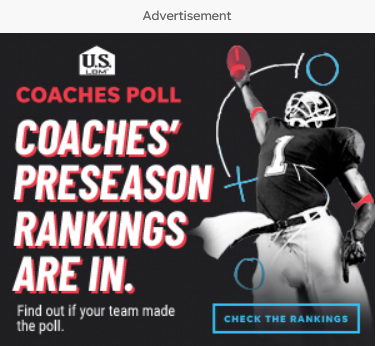Photo by Team TGM
Conversion Rate Optimization sounds technical, but it’s really about one thing – getting more value from the traffic you already have.
It’s a core part of any serious digital marketing strategy.
You don’t need more visitors. You need more of the right ones doing what matters.
Every click costs. if your visitors are showing up but not converting, that’s a wasted budget.
So if you’ve ever asked, “Why aren’t more people converting?” This is where you get answers.
Let’s break it down.
Table of Content:
What Is a Conversion, Really?
Before we jump into data and tools, here’s a simple truth: not every conversion is a sale.
A conversion can be:
- Clicking “Sign up”
- Filling out a contact form
- Downloading a whitepaper
- Booking a call
- Completing a purchase
A conversion is any user action that matters to your business. It’s whatever moves someone closer to becoming a customer.
And here’s the conversion rate formula: (Conversions / Total Visitors) × 100
Say 30 people sign up out of 500 visitors. That’s a 6% website conversion rate, Doesn’t sound like a lot, but that 6% can make or break your budget.
But to improve that number, you first need visibility. This is where conversion tracking tools like GA4 or Mixpanel give you the full picture of what’s actually happening behind the scenes.
You need data to see what’s working, and more importantly, what’s not.
Why CRO Deserves Your Attention
Let’s not sugarcoat this: if your site doesn’t convert, your business doesn’t grow.
ROI.
CRO benefits go way beyond a quick lift in clicks or sales. Here’s what actually happens when you focus on optimizing for conversions:
- You make more money from the same traffic.
- You reduce your customer acquisition cost (CAC).
- You deliver a smoother user experience that actually gets people to stick around.
That’s not fluff, that’s what happens when your website performance is built around what users actually want.
Focusing on improving website performance isn’t a nice-to-have, it’s what separates scalable teams from struggling ones.
Key Elements That Power CRO
A lot of people think CRO is just about testing headlines.
It’s not. It’s a mix of science, storytelling, and smart experiments. Here’s what makes it work:
- A/B testing and multivariate testing: Don’t assume. Test everything from hero text to CTA placement. (Learn more about What is A/B testing)
- UX optimization: If your site’s clunky, you’ll lose people before they even read the headline.
- Landing page optimization: Strip distractions. Focus on one goal per page.
- Persuasive copywriting CTAs: Clarity beats cleverness. Every word should nudge action.
- Website speed optimization: A 1-second delay drops conversions by 7% (Source: Akamai).
- Trust signals: Think testimonials, reviews, real names. Social proof works.
You don’t need all of this at once. But knowing what to tune up makes a massive difference.
The CRO Process
Random tweaks won’t help. You need a process. A system.
Here’s what a proper CRO strategy that grows over time, and actually sticks looks like:
Step 1: Research with Real Data
Use tools, and user sessions to watch how users behave. What pages do they bounce from? Where do they stall? How do people navigate your site?
Step 2: Identify Conversion Bottlenecks
Where are users dropping off? Is your form too long? Is your CTA buried? This is where conversion funnel analysis helps. Know where users drop off.
Step 3: Build a Hypothesis
Don’t just test randomly. Create a clear hypothesis like: “Changing the CTA button from blue to orange will increase click-through rate.”
Step 4: A/B Test
Run clean, single-variable experiments. Use tools that make it easy to measure without wrecking your site.
Step 5: Analyze Act
The test isn’t over when you see results. Dig in. Validate, and roll out what works.
CRO Tools That Actually Help
The right tech stack won’t fix bad UX, but it’ll give you the insight to fix it. Some of the most trusted CRO tools:
- Hotjar Crazy Egg – to watch scroll and click behavior
- Optimizely – full testing suite for enterprise
- Unbounce – create and test custom landing pages
- Microsoft Clarity – a free gem with powerful behavioral analytics
Common CRO Mistakes (You’ll Want to Avoid)
You can have all the tools and still tank if you fall into these traps, Even seasoned marketers mess this up:
- Too many changes at once: It muddies the results. One tweak at a time.
- Focusing on traffic over UX: 100,000 visitors mean nothing if the experience makes them leave in 5 seconds.
- Forgetting mobile users: Over 60% of users come from mobile. If your site doesn’t work there, you’ve already lost. Mobile-first isn’t optional anymore. It’s 2025.
These website optimization errors cost real money, especially when your site’s primary traffic is mobile and you’re testing on desktop.
Best Practices for Conversion Rate Optimization
CRO isn’t a one-time project. It’s a mindset shift. And the teams that see consistent growth treat it that way, from how they approach data to how they run experiments.
1. Let data lead
Strong opinions are common. Data-backed decisions are rare. Use behavior analytics, heatmaps, session recordings, and funnel reports before making any changes.
2. Focus every page on a single conversion goal
Remove distractions. Guide attention. Support that single objective with everything else on the page – copy, design, CTA, layout.
3. Clarity outperforms cleverness
The most effective landing pages use clear, benefit-driven copy that eliminates guesswork. Make sure your message answers one question fast: “Why should I care?”
4. Build for the user not internal stakeholders
Many sites are designed to please internal teams, not real people. Every design choice should support user flow, not brand vanity.
5. Optimize for speed, especially on mobile
Page load time is a CRO killer. A fast, focused page beats a beautiful one that takes too long to load especially for mobile-first users.
6. Never stop testing, even when something works
The best-performing pages today can fall flat tomorrow. User expectations change. Trends shift. What worked at 10K visitors might not work at 1M. Revisit your top pages regularly with fresh hypotheses and improved tactics.
Conclusion
If there’s one thing to take away – it’s this: Conversion Rate Optimization is never done.
You’ll keep testing. You’ll keep failing. You’ll keep learning. That’s the point.
So whether you’re optimizing for leads, signups, or straight-up revenue—remember: small, intentional changes make the biggest difference.
Just start testing what matters to your users. One click at a time.
-
CRO stands for Conversion Rate Optimization. It refers to the process of improving your website or landing page to get more visitors to take meaningful actions—like signing up, purchasing, or filling out a form—without increasing traffic.







